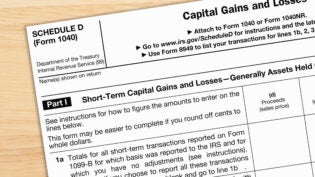3 Small Business Financial Statements You Need to Know
By: Wagepoint

When it comes to financial statements for business management, small business owners tend to fall into one of three categories:
- Small business owners who have their financial statements completely in order and use them to drive a thriving company.
- Small business owners who understand how financial statements work but are too busy to fully apply them.
- Small business owners who don’t fully understand financial statements because they came to business ownership without a background in business.
If you’re a member of the second or third group, this guide can benefit you the most. However, even members of the first group can benefit from reviewing the basics is one of the most important ways to keep anything on track.
The three essential financial statements to run your small business are your balance sheet, your income statement and your cash flow statement. Here, we’ll break down how they work, what composes each and how they affect your small business.
Balance Sheet
(aka statement of financial position)
A balance sheet tracks the assets, liabilities and owner-held equity for your business at a specific point in time. It’s important because it indicates the approximate cash value of a business. Partners might use it to valuate stock, and lenders look at it to assess collateral and risk, which affects your likelihood of receiving funding for your small business should you need it.
Let’s look at the key data points on a balance sheet.
Assets
Assets are everything the business owns outright and their value. Stock in a showroom and a recently signed contract for five years of service are both examples of assets. There are two types of assets: current and long-term.
Current assets, or short-term assets, account for assets that last one year or less. Some examples include cash, inventory and prepaid expenses like insurance. Long-term assets are, as the name states, assets that are longer term. Some examples include equipment, tools and property owned by your small business. Other examples include non-tangible assets like patents, trademarks or copyright.
Liabilities
Liabilities are everything the business owes to a creditor or a vendor who has paid for services not yet rendered or goods not yet delivered. The balance of a business loan and the money owed on stock in a warehouse are both examples of liabilities. There are two types of liabilities: current and long-term.
Current liabilities are obligations that must be paid within the year. Some examples include lines of credit, small business loans and payroll. Long-term liabilities can be paid over a longer period of time. Some examples of these include larger loans like mortgages or deferred income tax.
Owner-Held Equity
Owner-held equity is the cash value of the company, generally calculated as the company’s assets minus its liabilities. This is the amount you have left after you subtract the total liabilities from the total assets. It includes your investments and retained earnings.
These components interact to show different valuations for the company based on rearranging the basic formula of Equity = (Total) Assets – (Total) Liabilities. This is necessary whenever an owner wants to purchase or sell shares and should be calculated annually regardless.
Income Statement
(aka profit-and-loss statement, statement of operations, P&L, statement of income)
An income statement is an accounting of revenues and gains and expenses and losses for a set period of time. It’s important because it indicates the profitability of a business’ current operations. This can guide management in how to expand or cut operations for greater profits as well as inform you of potential lending decisions.
The key data points on an income statement are:
Revenue
Revenue is the “on-paper” income from accounts and operations (for example, a $10,000 sale to be paid over the course of a year). There are two types of revenue: revenue gained from primary activities and revenue gained from secondary activities.
Primary activities include operating expenses, like sales or services rendered. Secondary activities include accruing interest on idle funds or rent from a vacated space. Essentially, secondary activities bring you revenue outside of operating expenses.
Gains
Gains are from other future incomes, such as a successfully settled lawsuit, or from selling your assets. You report your gain on your income statement with this formula: Gains = Proceeds received from the sale of a long-term asset – Amount listed for the asset on your books.
Let’s say you own a retail store and decide to sell some leftover inventory. On your books, you purchased the inventory for $1,000, but you upsell it for $1,500. That means your gains would equal $500.
Expenses
Expenses are “on paper” expenses from operations, like a commitment to spend $4,000 on a project in the coming quarter. Like revenue, expenses come from primary activities and secondary activities.
Primary activities involve expenses incurred to keep up normal operating revenue (for example, purchasing inventory or upgrading your equipment to run your business). Secondary activities involve expenses incurred outside of operating revenue. A good example of this is interest expenses.
Losses
Losses are the values lost from selling assets or other future outgo, such as a settlement on overdue taxes. To calculate loss, use this formula: Loss = Amount listed for an asset on your small business’s books – Proceeds you received from the sale of a long-term asset.
Going back to the retail example, let’s say instead of earning $1,500 on the sale, you earn $700. This means your losses would be $300.
Totaled up, this report shows the likely profitability of the company if things go as expected. It’s not 100 percent reliable, however, since not all committed income and expenses are always executed. A full P&L is smart every quarter or even every month, and smart business managers receive a mini-P&L from each department once a week to track performance.
Income statements are formatted generally in two ways: single-step and multi-step. Single-step income statements show one category of income and one category of expenses. However, external users won’t find this as beneficial because it does not calculate the efficiency and profitability ratios of your small business. Multi-step income statements separate expense accounts based on their function.
To calculate gross profit, operating income and net income, you separate cost of goods sold, operation expenses and non-operating expenses. This gives a more well-rounded view of your small business’s efficiency and profitability because it provides more data than a single-step income statement.
Cash Flow Statement
(aka statement of cash flows)
A cash flow statement is a detailed accounting of the cash generated and used for a specific period of time. It is in contrast to the income statement because the income statement shows what business has been generated on an accrual basis.
The cash flow statement shows what funds have actually come into your small business’s accounts. It’s important because it tells management how much cash is available to pay expenses and invest in the business. Large discrepancies between the cash flow statement and the income statement can also identify problems in your business’s operations.
The key data points on cash flow statement include:
Operating Cash Flow
Operating cash flow is cash paid to and from your account from actual operations. For example, the checks students pay each month to a gymnastics academy provide operating cash flow. Another example includes purchasing a few dozen dresses for your retail shop or a few cases of coffee for your coffee shop.
Investing Cash Flow
Investing cash flow is the income and expenses from buying and selling assets like real estate and operating equipment. For example, selling an unused fleet vehicle creates investing cash flow and buying a new machine press to expand operations creates negative investing cash flow.
Financing Cash Flow
Financing cash flow is the cash actions related to company stocks and bonds, including issuing either, repurchasing either and paying dividends to owners. Owner draws on a small business account are a common form of financing cash flow (they’re essentially an informal dividend).
Other Details
You should consider adding additional details in your cash flow statement, including any loss or gain of a major non-cash asset and miscellaneous cash actions like tax payment or paying and receiving interest on accounts.
Put together, this information forms a complete picture of where cash is and how it moves for your business. It can be tricky to understand to prepare, analyze and understand your cash flow statement. However, there are easy ways to tell if your small business is accruing profits or debt.
High quality (or positive) cash flow statements show your net income strategies are working and your small business is profitable whereas low quality (or negative) cash flow statements show your small business needs to pinpoint and fix why your net income isn’t turning into cash. You see high-quality cash flow when your statements are in the black and low-quality cash flow when your statements are in the red.
It’s best to complete a cash flow statement once a quarter and before making any kind of presentation to stockholders, potential partners or lenders. Your stockholders, partners and lenders want to know they can trust your business to not lose them money. By conducting a cash flow statement on a regular basis, you can catch or prevent any major red flags that these groups might be concerned with.
With this guide, you should be able to help you better master your small business’s finances, even if you’re already a thriving company. However, one sometimes disappointing aspect of running these financial statements is that they always tell the truth – meaning if you’re in hard financial straits, they will show you a difficult financial picture. If your financial statements report or predict a shortfall, consider online lending. Small business loans and revolving lines of credit can put the cash in your operating account you need to get through a slow patch or leverage and advantage.
This highly informative post was provided by Kabbage — a company that empowers small businesses through straightforward, flexible access to capital. We’d like to thank them for helping us share this essential small business knowledge.
 Author: Constantina Kokenes is a Content Specialist at Kabbage, a small business loans provider. She holds a master’s degree from Northwestern University, where she learned how to create content that could best be organically shared. When not in the marketing world, Constantina enjoys strategy games and singing along to the Law & Order: SVU theme song.
Author: Constantina Kokenes is a Content Specialist at Kabbage, a small business loans provider. She holds a master’s degree from Northwestern University, where she learned how to create content that could best be organically shared. When not in the marketing world, Constantina enjoys strategy games and singing along to the Law & Order: SVU theme song.












